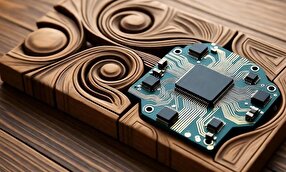Iranian Scientists Design Next-Generation Processors with QCA Technology

“Miniaturization of digital devices and reduction in energy consumption are among the most important needs of the industry. QCA technology provides a suitable response to these needs by reducing the dimensions of the circuits and its inherent low-power nature,” said Hamid Qolami, a faculty member at the University of Mazandaran and a researcher of the project.
“In this research, the main focus has been on designing the arithmetic and logic unit (ALU) in QCA technology. Logic units are the main components of processors and play a key role in the performance of processing systems,” he said.
"The goal of this design is to reduce the number of cells and the occupied area in the design of digital circuits. These features, along with the inherent characteristics of QCA technology, make the proposed circuit a suitable option for the logic unit of next-generation processors," Qolami said.
Noting that QCA technology has attracted the attention of researchers due to its low power consumption, high speed, and small size, he said, “This technology can be used in the design of high-speed processors for various industries like telecommunications, electronics, defense and military, and computer-related industries.”
QCA is a proposed improvement on conventional computer design (CMOS), which have been devised in analogy to conventional models of cellular automata.
A cellular automaton (CA) is a discrete dynamical system consisting of a uniform (finite or infinite) grid of cells. Each cell can be in only one of a finite number of states at a discrete time. As time moves forward, the state of each cell in the grid is determined by a transformation rule that factors in its previous state and the states of the immediately adjacent cells.
4155/v





















